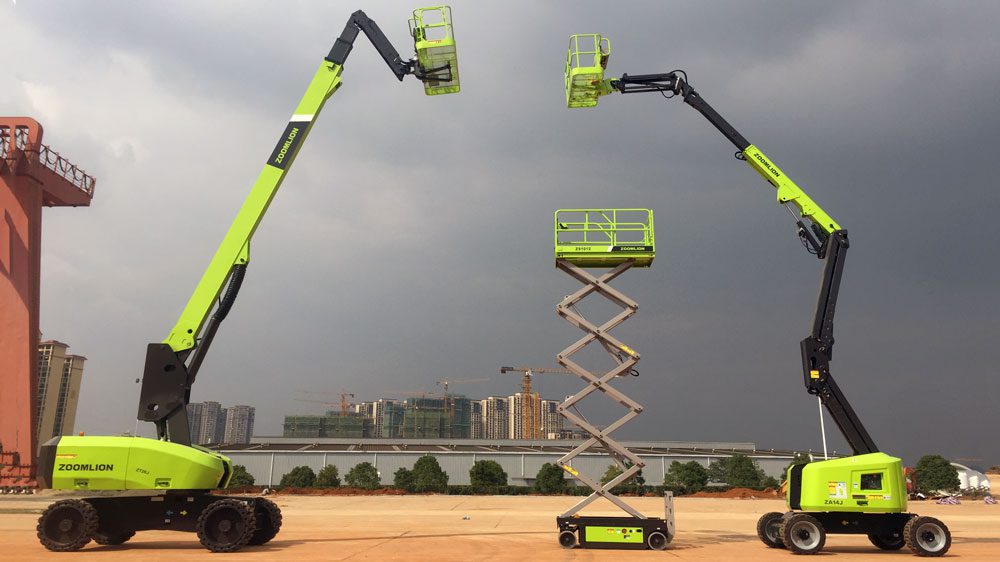Benefits of Scissor Lift Safety Training

Benefits of Scissor Lift Safety Training
Worksite safety is a top priority across industries, and it’s crucial to implement effective safety measures to protect employees and prevent accidents. One of the key elements of worksite safety is scissor lift safety training. Scissor lifts are commonly used in construction, maintenance, and various other sectors to access elevated work areas. However, operating a scissor lift without proper training can lead to accidents and injuries. In this article, we will explore the numerous benefits of scissor lift safety training and how it significantly contributes to creating a safer worksite environment.
- Reduced Risk of Accidents and Injuries
The most apparent Benefits of Scissor Lift Safety Training is the substantial reduction in the risk of accidents and injuries. Scissor lifts involve working at heights, which can be inherently dangerous if not approached with caution and knowledge. Training programs are designed to educate operators on safe operating practices, potential hazards, and risk mitigation strategies. By providing this essential knowledge, scissor lift safety training equips operators to perform their tasks with a significantly lower risk of accidents, including falls, tip-overs, and collisions, thereby ensuring their safety.
- Compliance with Regulations
Occupational safety regulations often require employers to provide scissor lift safety training to their employees. Compliance with these regulations is not only a legal obligation but also a fundamental aspect of worksite safety. Failing to provide adequate training can lead to legal consequences and hefty fines. Benefits of Scissor Lift Safety Training programs are specifically designed to meet regulatory requirements, ensuring that organizations remain compliant with safety standards and legal mandates.
- Enhanced Operator Competence
Scissor lift safety training enhances operator competence by providing a thorough understanding of the equipment and its safe operation. This includes crucial aspects such as pre-operation inspections, proper start-up and shutdown procedures, and safe maneuvering techniques. Competent operators are better equipped to handle the equipment, navigate various worksite challenges, and perform tasks efficiently and accurately. Their expertise reduces the likelihood of accidents and contributes to overall worksite safety.
- Improved Safety Awareness
Training programs emphasize the importance of safety awareness among scissor lift operators. Participants learn to assess worksite risks, identify potential hazards, and adopt a proactive approach to safety. This heightened safety awareness extends beyond scissor lift operation; operators become more vigilant in recognizing and addressing potential dangers in their work environment. As a result, not only are they safer while operating scissor lifts, but they also contribute to creating a safer overall worksite for themselves and their colleagues.
- Increased Worksite Efficiency
Well-trained scissor lift operators are more efficient in their tasks. They have a deep understanding of how to use the equipment effectively and can complete their work more quickly and accurately. This increased efficiency benefits both productivity and worksite safety. Operators spend less time exposed to potential safety hazards, as they can efficiently complete their tasks and move on to the next ones with confidence.
- Emergency Response Preparedness
Benefits of Scissor Lift Safety Training includes instruction on emergency response procedures. Operators learn how to react effectively in critical situations, such as equipment malfunctions, power failures, or medical emergencies involving themselves or their colleagues. Being prepared for emergencies minimizes their impact and ensures a timely and effective response, which can be crucial in mitigating potential accidents and injuries.
- Customization for Specific Worksites
Training programs can be customized to address specific worksite needs and challenges. Organizations can tailor the training to account for unique factors, such as working in confined spaces, using scissor lifts outdoors, or handling specialized equipment. Customized training ensures that operators are well-prepared for their specific job requirements, making them more effective and safer in their roles.
- Reduction in Insurance Costs
Organizations that invest in scissor lift safety training may experience a reduction in insurance costs. Insurance providers often offer lower premiums to companies that demonstrate a commitment to safety through comprehensive training programs. Over time, these cost savings can offset the initial investment in training while providing a financial incentive to prioritize safety.
- Boosted Operator Confidence
Scissor lift training instills confidence in operators, helping them feel more secure and capable while using the equipment. Confident operators are less likely to make mistakes or take unnecessary risks. This confidence contributes to overall worksite safety, as operators perform their tasks with a sense of assurance and competence.
- Cultivation of a Safety Culture
Implementing scissor lift safety training fosters a culture of safety within the organization. When employees observe that their employers prioritize safety through education and training, they are more inclined to adopt safe practices and encourage their colleagues to do the same. This long-term commitment to safety helps create a safer worksite environment, where safety is not just a requirement but a shared value.
Scissor lift safety training is an indispensable component of worksite safety. By reducing the risk of accidents and injuries, ensuring compliance with regulations, enhancing operator competence, and promoting safety awareness, it significantly contributes to creating a safer work environment. Moreover, it prepares operators to respond effectively to emergencies, reduces insurance costs, and cultivates a robust safety culture within the organization. Investing in scissor lift safety training is not merely a legal requirement; it is a crucial step in safeguarding the well-being of workers and ensuring the overall success of any worksite. It is an investment in both safety and productivity, ultimately benefiting the organization as a whole.
Click here for an online scissor lift training course.
Click here for Government of Canada information.
